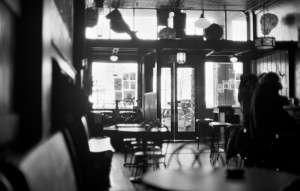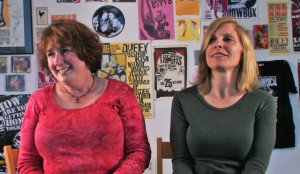About the Klavihorn
The Klavihorn was invented in 1895, the same year America the Beautiful was written by Kathie Lee Bates. A hybrid of keyboards, horns, winds, strings and percussion, was touted as the “modern solution” to the orchestra, allowing its player to replicate instruments of an orchestra. The Klavihorn was one of the first instruments run by electricity.
During the 1930′s the Klavihorn enjoyed a surge in popularity when the Nazi’s claimed it as “an instrument for all time” (Joseph Goebbels) and required youth to study its technique. Hitler was conjectured to house one at his Berghof residence, and invited prominent artists to give private performances. In the late 30‘s, however, it came under suspicion as as being politically objectionable and Klavihorn performances were forbidden.
Only six Klavihorns were ever built and were thought lost during the Allie’s bombing in WW2. In 1979, a disassembled Klavihorn was discovered in an East Berlin bunker (along with a single recording of the instrument). Over the ensuing year, it was smuggled out piece by piece by archivist/music historian Martin Mueller; its remnants (along with a vast collection of instruments and antiques) were bequeathed to Seattle relatives decades later.
In 2010, while sorting through Muellers’ eclectic estate, great nephew Ben Blankenship stumbled across blueprints of the instrument. The Fisher Ensemble, which often uses instruments from multiple cultures and time periods, took interest in the project and hired Blankenship, as well as long-time collaborator Ryan K Adamsto restore the instrument.
The work will be presented by the Fisher Ensemble in collaboration with The Project Room. The Project Room will display the drawings and host the rebuilding of the Klavihorn which will culminate in the first Klavihorn performance in almost 75 years.
About the Garrett Fisher & the Fisher Ensemble
“There’s nothing else in Seattle like the Fisher Ensemble — and there may not be in the whole country, either…the sound is richly resonant and you never know how it’s going to shape itself around you” (Seattle Times). Founded in 1994 by composer Garrett Fisher, the internationally recognized Fisher Ensemble is an eclectic mix of vocalists, movers, actors, and musicians, including such instruments as Indian harmonium, 6 string fretted acoustic bass, gongs, Taiko percussion, English horn, electric viola and flute. Led by Mr. Fisher, the Fisher Ensemble has created several performance pieces that harness ritual and myth to bridge ancient and modern forms. Their work Kocho was produced by acclaimed creative producer Beth Morrison in New York City in 2011. www.fisherensemble.org
Garrett Fisher, Artistic Director of the ensemble, is currently composing his most ambitious opera to date, MAGDA G. Inspired by the ancient Greek Tragedy ofMedea, MAGDA G will be based on the wife of Nazi Germany’s Propaganda Minister Joseph Goebbels. Magda bore six children, whose names all began with the letter “H,” supposedly out of reverence for Hitler. In 1945, in the Führerbunker, Magda Goebbels murdered her children before committing double suicide with her husband. Fisher considers Magda a modern-day Medea. In Euripides’ play, Medea murders her children to seek revenge against her unfaithful husband. Magda, on the other hand, performed the act as protest against a quickly changing political landscape. Fisher, intrigued by the similarities and differences, sees Magda as a modern-day Medea, whose story resonates with our polarized ideological climate. The New York Times writes, “Mr. Fisher has combined elements of opera, dance, Indian raga, Japanese Noh theater and more into fusions that have both a ritualistic intensity and an improvisatory freedom…a strong, unified and strikingly individual utterance of unambiguous beauty.”
The Klavihorn’s restoration is supported by GlobalArts, not-for-profit organization dedicated to the presentation and promotion of new and historical musical work.
Above photo by Ben Blankenship

































